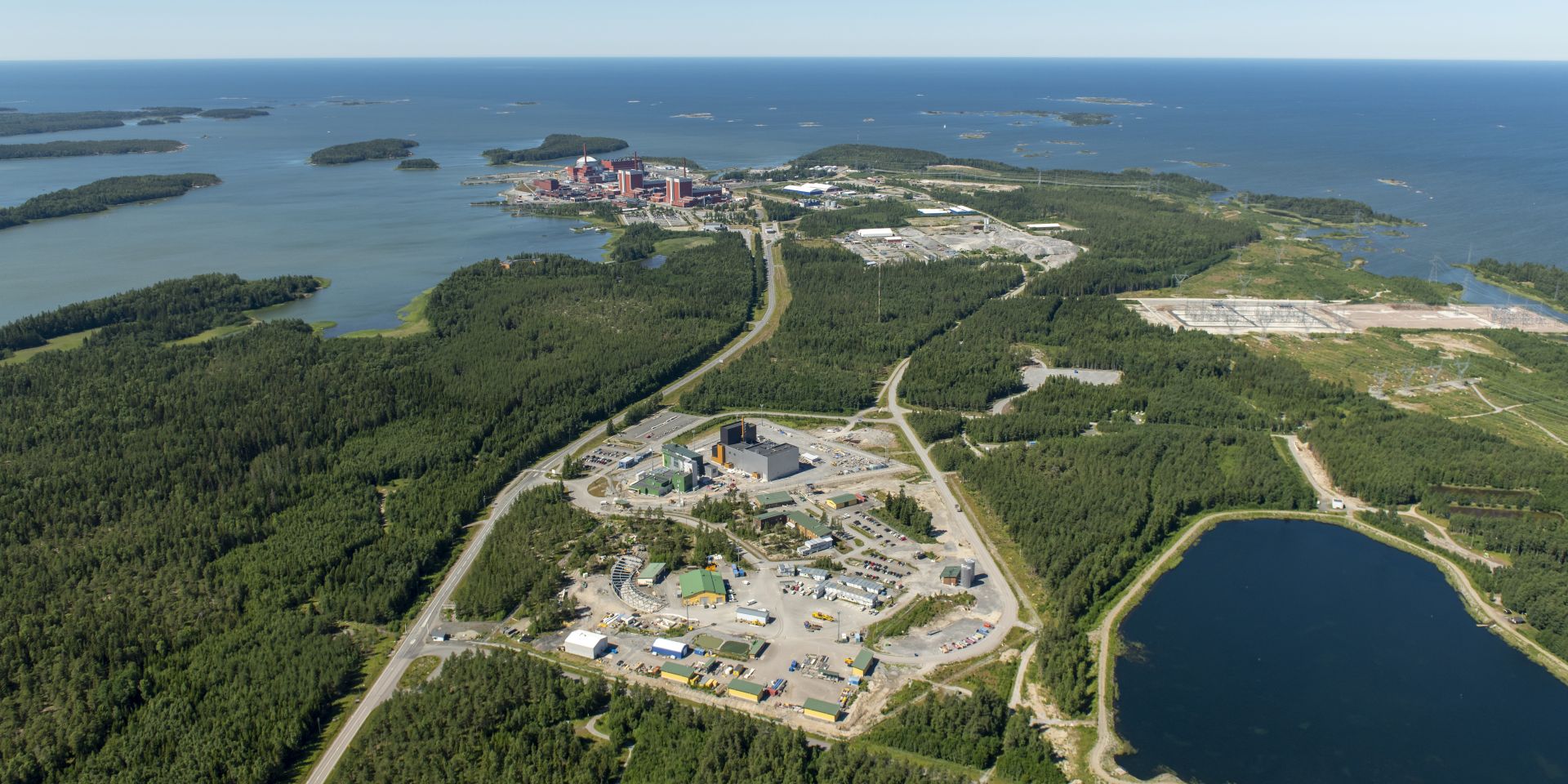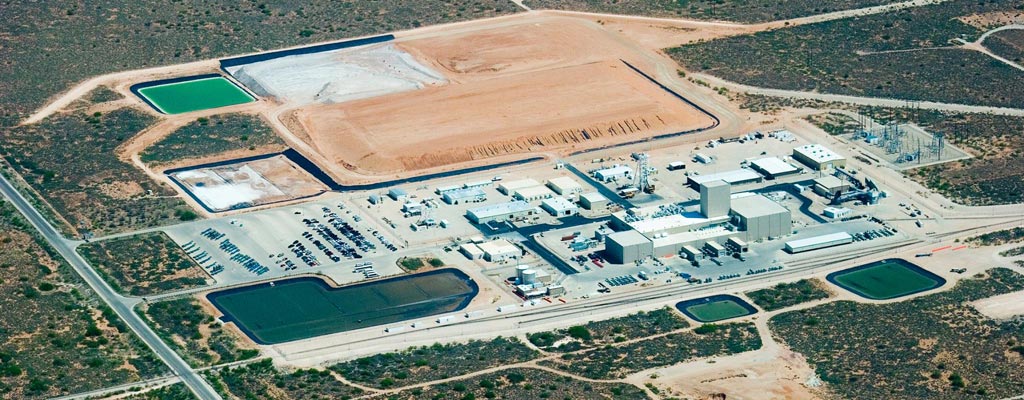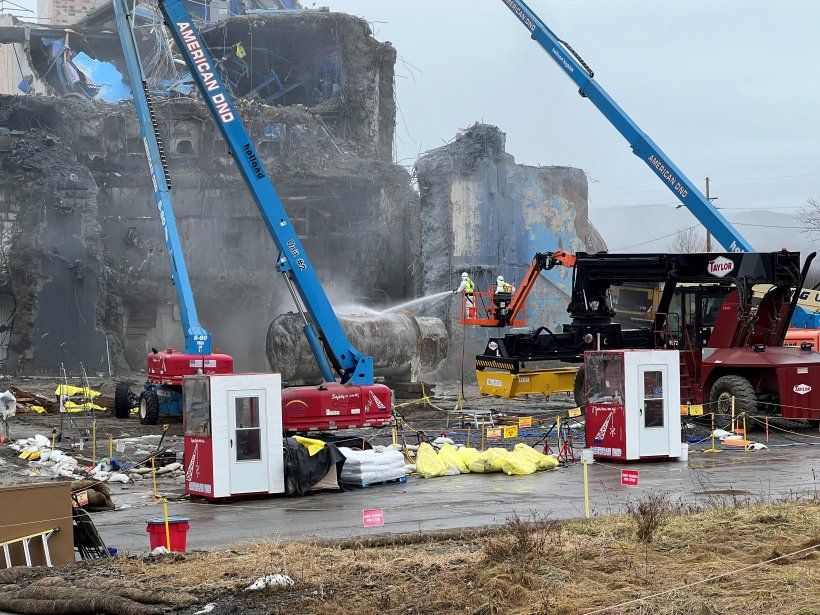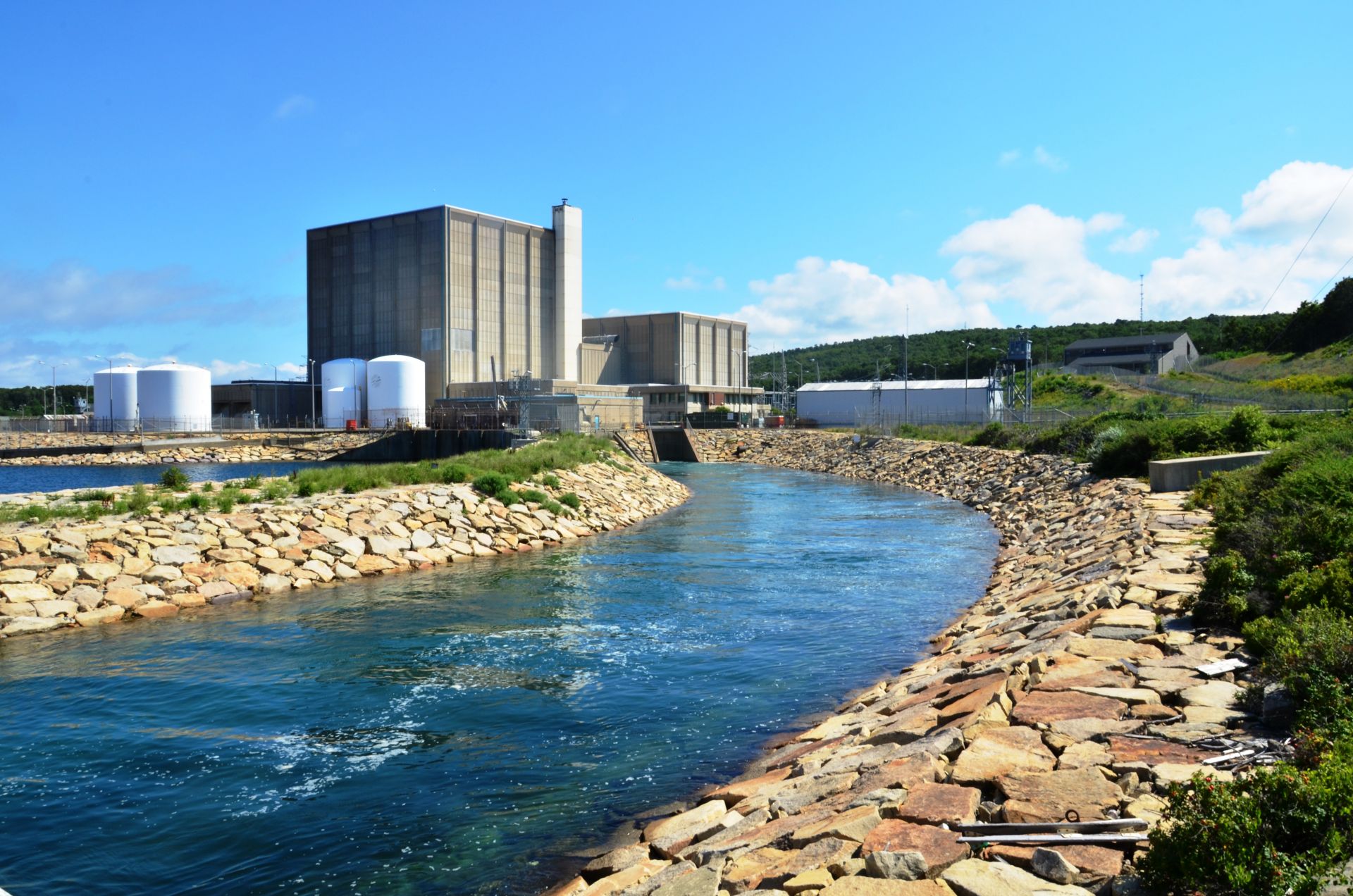Hanford’s Waste Treatment and Immobilization Plant, also known as the Vit Plant. (Photo: Bechtel National)
The Department of Energy’s Office of Environmental Management once again awarded a 10-year, $45 billion contract to Hanford Tank Waste Operations and Closure (H2C) of Lynchburg, Va., for the cleanup of tank waste at the Hanford Site.
March 1, 2024, 3:03PMRadwaste SolutionsEdited by Tim Gregoire. Photos courtesy of Tapani Karjanlahti/Posiva. The site of the Onkalo deep geological repository near Eurajoki in southwestern Finland with the Olkiluoto nuclear power plant in the background. In 2015, Posiva received a construction license from the Finnish government for the repository, which will be constructed to a depth of 1,300 to 1,500 feet.
The year 2024 is shaping up to be a historic one for Posiva, the waste management organization owned by Finland’s two nuclear power plant utilities, Fortum and Teollisuuden Voima. The company is looking to receive regulatory approval of its operating license for the Onkalo deep geological repository for high-level radioactive waste by the end of the year.
Orano CEO Nicolas Maes (left) and SHINE Technologies founder and CEO Greg Piefer shake hands after agreeing to cooperate on a pilot used fuel recycling facility. (Photo: Orano)
Orano and SHINE Technologies have agreed to cooperate in the development of a pilot plant capable of recycling used nuclear fuel from light water reactors on a commercial scale. In announcing the signing of a memorandum of understanding on Thursday, the companies said the selection of a site for the pilot U.S. facility is expected by the end of this year.
The DOE's Waste Isolation Pilot Plant. (Photo: DOE)
Schematic of a deep horizontal borehole repository for nuclear waste. (Image: Deep Isolation)
Waste disposal start-up Deep Isolation and fusion tech company SHINE Technologies have announced the completion of a collaborative study assessing the costs of disposing of radioactive byproducts from a pilot spent nuclear fuel recycling facility.
Aiken County Public School District students test out a mock glovebox during a tour of the Savannah River Site’s Waste Solidification Building. (Photo: SRNS)
Fifteen area high school students recently completed job shadow experiences with leaders, engineers, and education outreach personnel at the Department of Energy’s Savannah River Site in South Carolina, according to Savannah River Nuclear Solutions (SRNS).
One of 18 startup heaters is installed in Hanford’s second melter, which will be used to vitrify liquid waste. (Photo: DOE)
The Department of Energy’s Office of Environmental Management announced that crews at the Hanford Site’s Waste Treatment and Immobilization Plant, also known as the Vit Plant, recently installed 18 temporary startup heaters in the second of two melters in the plant’s Low-Activity Waste Facility.
Workers at the West Valley Demonstration Project prepare a large tank for loading after removing it from a liquid waste cell of the Main Plant Process Building. (Photo: DOE)
The Department of Energy’s Office of Environmental Management and its cleanup contractor at the West Valley Demonstration Project have removed the largest of nine tanks from a liquid waste cell as part of the ongoing demolition of the Main Plant Process Building, the office announced on February 6.
A monitor in the control room of the Hanford Site’s TSCR system shows workers performing maintenance inside the TSCR facility. (Photo: DOE)
The Department of Energy Office of Environmental Management’s Office of River Protection and contractor Washington River Protection Solutions have completed the first waste processing campaign through the Tank-Side Cesium Removal (TSCR) system at the Hanford Site.
A waste transport delivery truck heads for the WIPP site in New Mexico. In 2023, the repository saw its best shipment performance in 10 years. (Photo: DOE)
The Department of Energy’s Office of Environmental Management announced last week that, for calendar year 2023, the department’s Waste Isolation Pilot Plant (WIPP) had its best shipment performance in 10 years, having received 489 transuranic (TRU) waste shipments from generator sites throughout the country. For comparison, WIPP received only 272 shipments in 2022.
The Pilgrim nuclear power plant. (Photo: Holtec)
The state of Massachusetts is looking to require Holtec, the owners of the Pilgrim nuclear power plant, to analyze water evaporation at the plant for potential air pollution as the unit is decommissioned.
At a hearing this week with a state Department of Environmental Protection panel, officials said that more study is needed on nonradioactive contaminants in about 1 million gallons of water that Holtec has proposed discharging into Cape Cod Bay.
Click to expand to see all priorities. (Image: DOE)
The Department of Energy’s Office of Environmental Management has released its program priorities for calendar year 2024, covering key cleanup actions, project construction, acquisition, and other important activities that will further the office’s mission of addressing the environmental legacy of the nation’s nuclear research and weapons development.
Nukem’s waste solidification plant mock-up. (Photo: Nukem Technologies)
Nukem Technologies, a German-based radioactive waste management company, announced last week that it has successfully completed a mock-up for a state-of-the-art waste solidification plant. The plant will use the in-drum cementation process for encapsulating various types of radioactive waste into a solid, secure form suitable for long-term storage.
A continuous miner machine cuts into salt rock as mining begins on Panel 11, one of WIPP’s next waste disposal panels. (Photo: DOE)
For the first time in a decade, crews have started mining a new disposal panel at the Department of Energy’s Waste Isolation Pilot Plant (WIPP) in New Mexico, the nation’s deep geologic waste repository for defense-related transuranic waste.


















